September 7, 2025
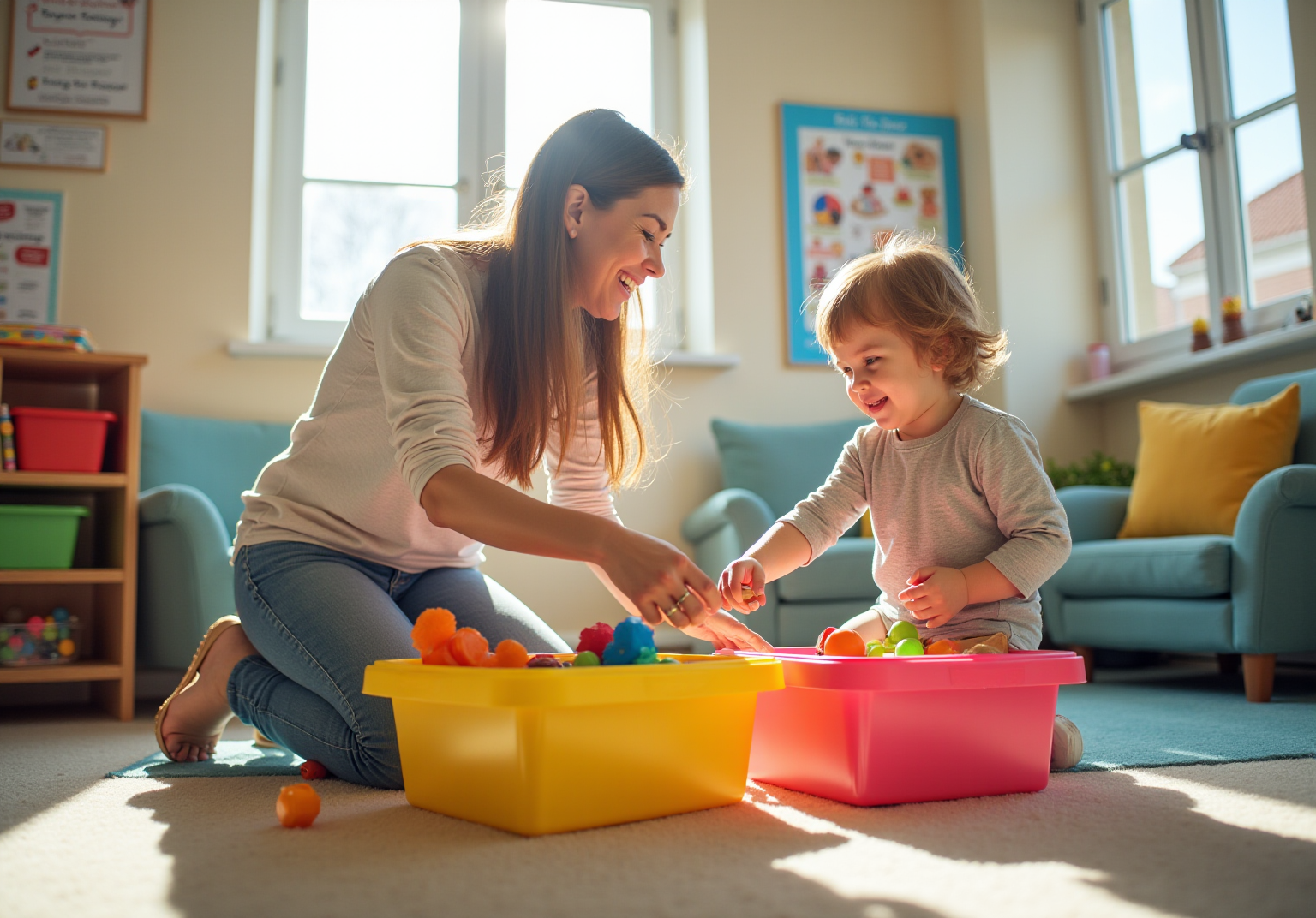
The article title "Which Examples Showcase Stimulus Generalization in ABA Therapy?" signals an exploration into specific instances that illustrate the concept of stimulus generalization within the realm of Applied Behavior Analysis (ABA) therapy. While the article does not present direct content, it delineates various examples, including:
These instances effectively illustrate how skills can be generalized across diverse contexts.
Such examples reinforce the principle of stimulus generalization by demonstrating that individuals can apply learned behaviors across various situations. This capability significantly enhances their ability to navigate real-world interactions and challenges.
Understanding how skills learned in therapy translate to real-world scenarios is vital in the field of Applied Behavior Analysis (ABA). As the demand for Board Certified Behavior Analysts (BCBAs) continues to grow, the importance of stimulus generalization becomes increasingly evident. This article delves into practical examples that illustrate how young individuals can apply therapeutic skills across various settings—from community interactions to family dynamics.
Exploring these questions reveals the transformative potential of ABA therapy in everyday life.
Hire ABA serves as a specialized recruitment platform that connects Board Certified Behavior Analysts (BCBAs) with premier job opportunities in the rapidly growing field of Applied Behavior Analysis (ABA). With the demand for BCBAs anticipated to increase by 25% by 2026, Hire ABA is pivotal in for both job seekers and employers. This platform is meticulously designed to deliver a supportive and efficient experience, ensuring that qualified professionals can effortlessly discover roles that align with their expertise and career aspirations. By employing advanced matching algorithms and leveraging industry insights, Hire ABA significantly enhances the job search experience for BCBAs, facilitating connections that culminate in rewarding career placements. This focused approach not only benefits job seekers but also boosts hiring efficiency for healthcare employers, thereby contributing to the advancement of ABA practices.
To further illustrate the resources available for educators and the essential skills BCBAs may require, it's important to note that there are 16 distinct task boxes in each set for teaching social skills, which are vital in their roles. Furthermore, Hire ABA provides personalized resume assessments, allowing candidates to submit their resumes for evaluation. This service guarantees that their experience and career objectives align with the most suitable job opportunities available, directly informing the advanced job fit scoring utilized in the matching process.
As technology continues to evolve, its impact on ABA job placements becomes increasingly significant. By utilizing visual supports and task boxes, BCBAs can augment their effectiveness in the field.
For healthcare employers looking to refine their hiring process, consider leveraging Hire ABA's advanced features and resources, including personalized job matching solutions and comprehensive support, to connect with qualified BCBAs who are prepared to meet the demands of the evolving landscape in ABA practice.
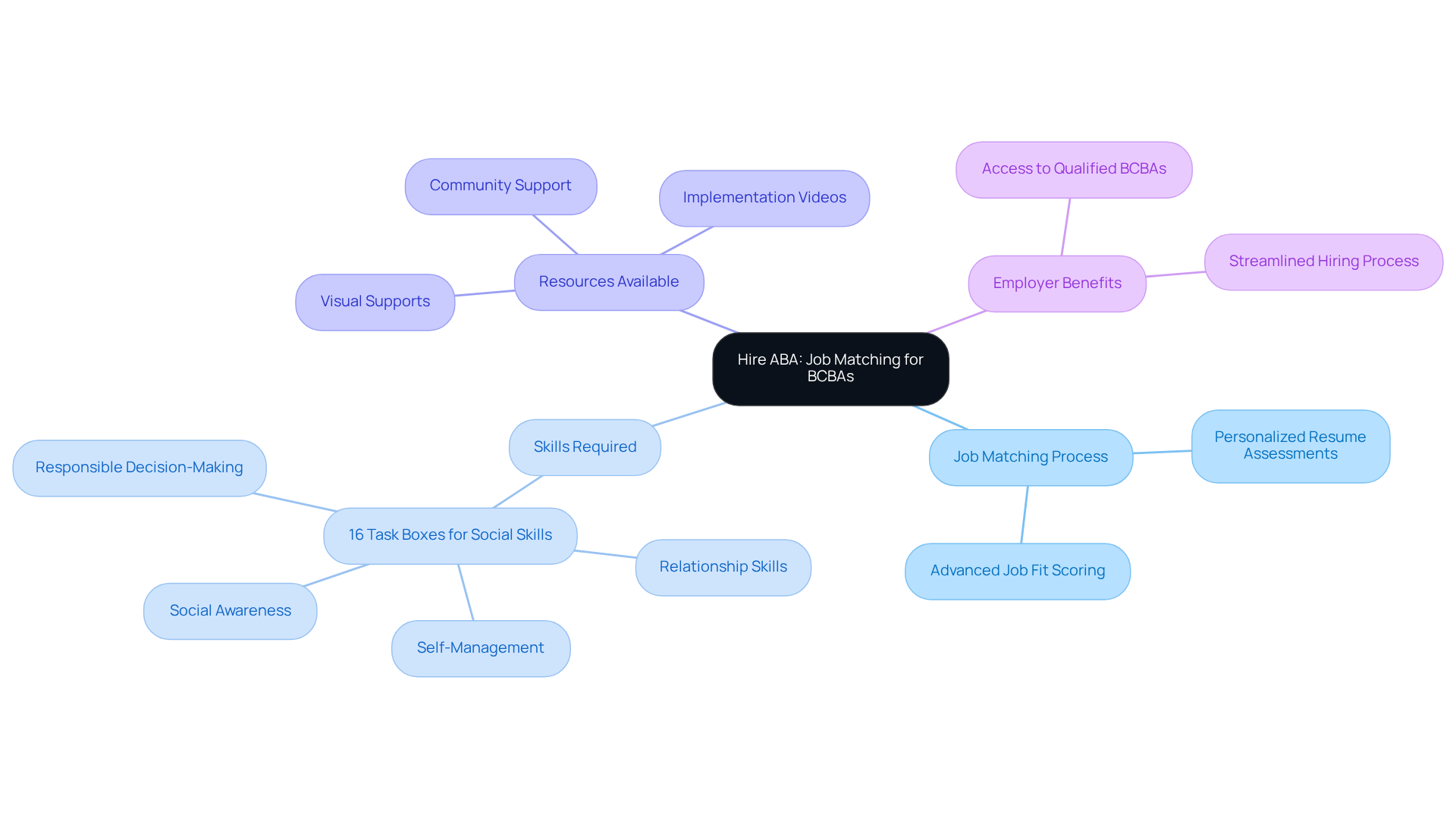
In community environments, youngsters can effectively apply , such as greeting others or initiating conversations. For instance, a young individual who learns to say 'hello' to their therapist can be encouraged to extend this greeting to peers at a park or community event. This practice not only reinforces the learned behavior but also significantly increases the likelihood that the young person will utilize these skills in various social situations beyond therapy.
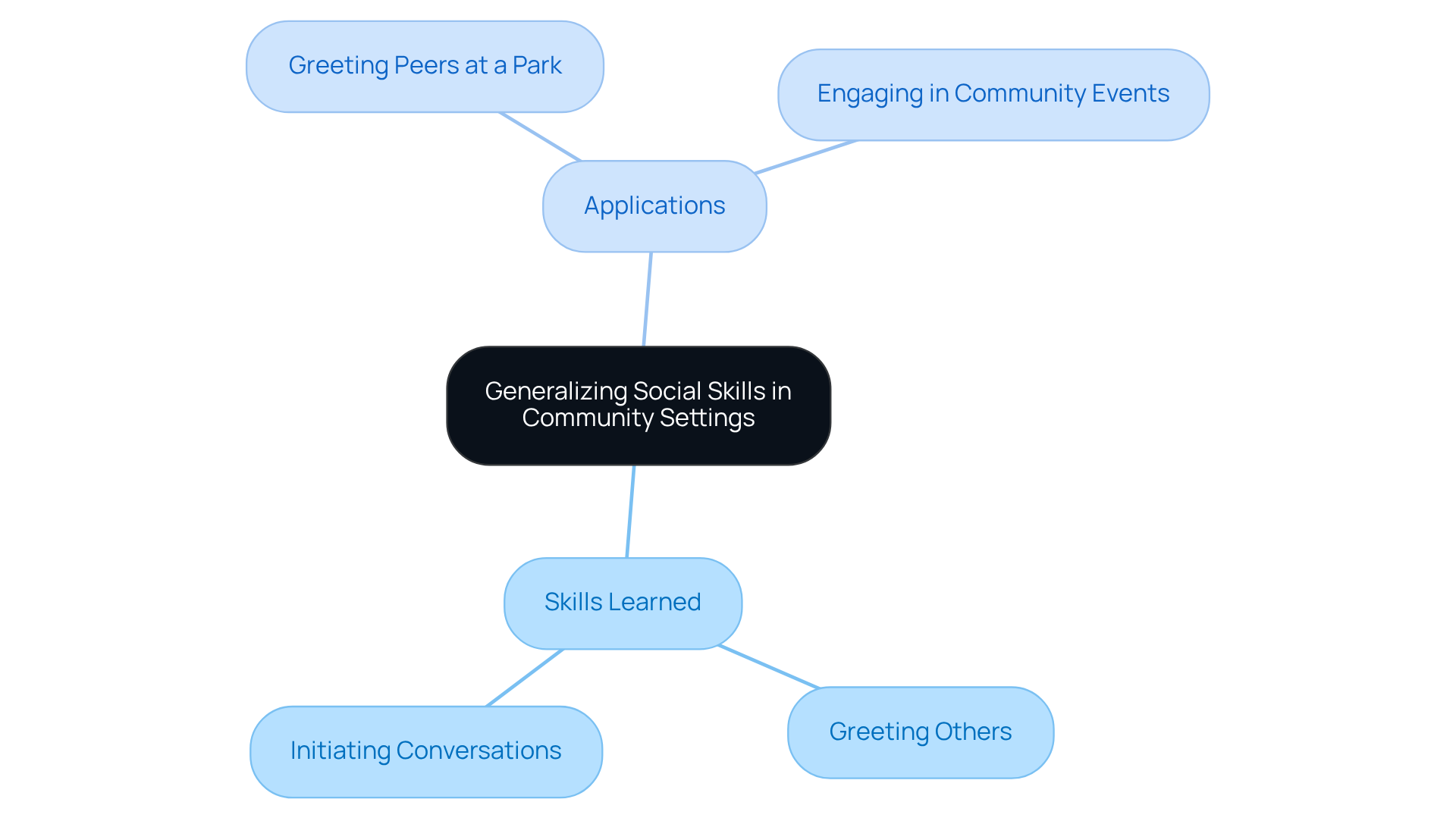
The capacity to apply knowledge acquired in the classroom to home settings is essential for the growth of young individuals. Consider this: when a young learner discovers how to request help with homework at school, it is equally crucial that they feel empowered to seek support from their parents at home. This not only strengthens their learning but also fosters autonomy across various environments.
Educators emphasize that such ability application is vital; as Yuxin Zheng from the Faculty of Education at Shannxi Normal University stated,
Numerous successful instances illustrate this point, including young learners who, after mastering the ability to follow multi-step directions in class, begin to utilize these skills at home by assisting with chores or organizing their tasks, which of the following is an example of stimulus generalization.
Recent findings suggest that when young individuals practice abilities in diverse contexts, they cultivate a more profound understanding and increased confidence, ultimately leading to enhanced outcomes in both academic and social areas. Furthermore, studies indicate that a nurturing home learning atmosphere significantly influences young people's social-emotional abilities, further underscoring the importance of competence generalization.
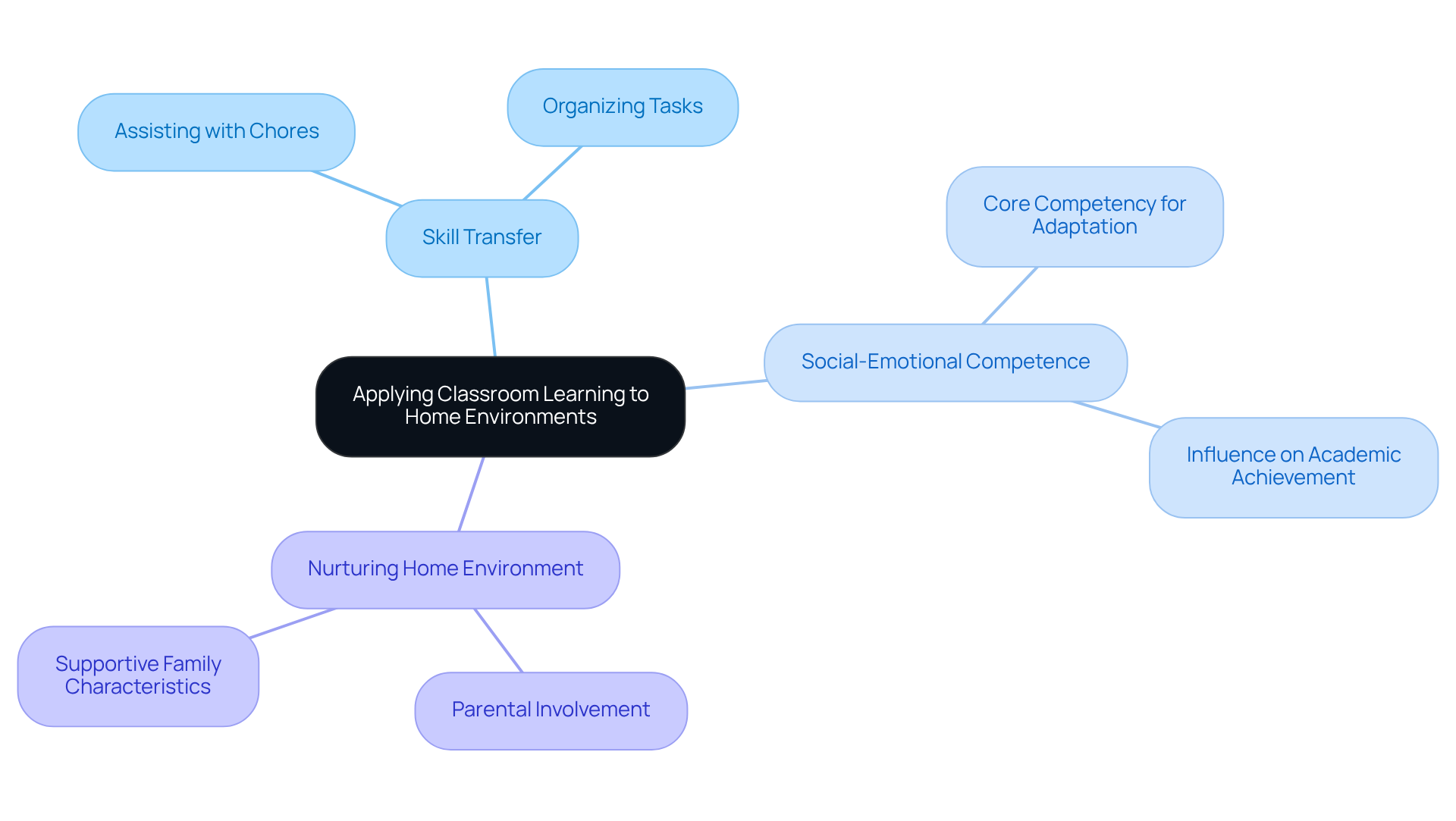
Involving multiple instructors in is crucial for enhancing the transfer of abilities. Consider this: when a young individual learns to communicate effectively with one therapist, introducing them to various instructors can significantly aid in understanding which of the following is an example of stimulus generalization of these communication skills. Each educator employs distinct prompts and teaching methods, which of the following is an example of stimulus generalization, encouraging the student to adapt their responses to diverse situations and individuals. This approach not only reinforces their learning but also prepares them for real-world interactions.
Are you maximizing the potential of your ABA therapy sessions? By embracing a multi-instructor strategy, you can ensure that your students thrive in varied environments.
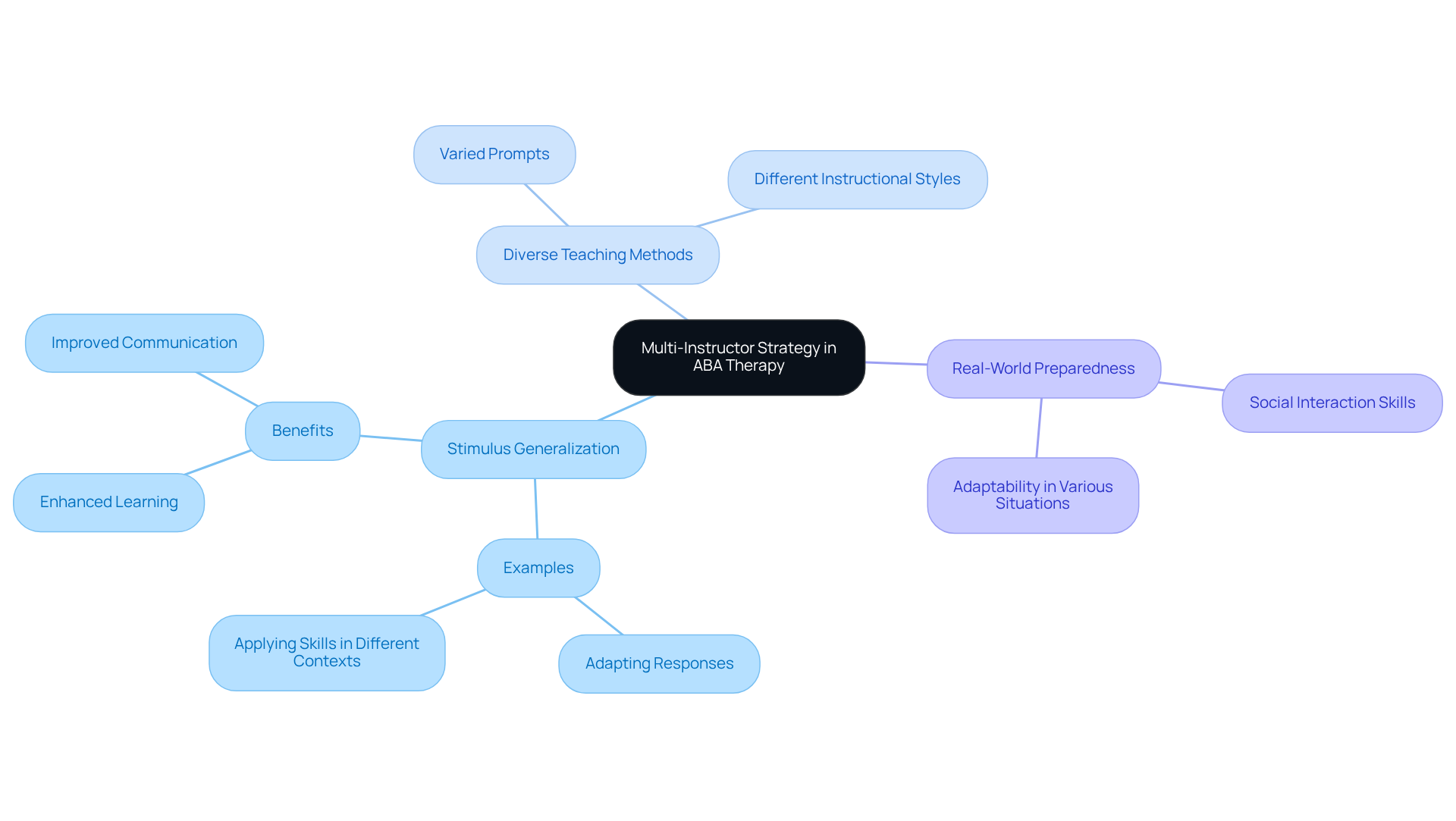
Naturalistic teaching methods significantly enhance the retention of skills for young learners by seamlessly integrating learning opportunities into daily contexts. For instance, during a family outing, a child can be encouraged to utilize their communication skills when ordering food at a restaurant. This practical application not only reinforces the but also renders them more relevant and easier to recall in similar situations.
Behavior analysts emphasize that embedding learning into everyday life fosters a deeper understanding and application of skills, ultimately yielding improved outcomes. Research by Johnson et al. (2020) illustrates that naturalistic teaching strategies effectively promote language development while reducing challenging behaviors. By leveraging everyday moments—such as requesting a favorite snack or labeling items during grocery shopping—children can practice and solidify their skills in meaningful ways.
As noted by ATCC®, "Naturalistic teaching strategies are a learner-centered, play-oriented approach that focuses on the individual's interests and strengths." These strategies empower young individuals to apply what they have learned in therapy to real-life situations, cultivating independence and confidence in their abilities.
Furthermore, a study by Schreibman et al. (2015) revealed that children employing naturalistic teaching methods experienced significantly greater improvements in communication skills compared to those undergoing discrete trial training (DTT). Overall, these strategies lead to heightened engagement and improved social communication, underscoring their effectiveness in fostering meaningful skill acquisition.
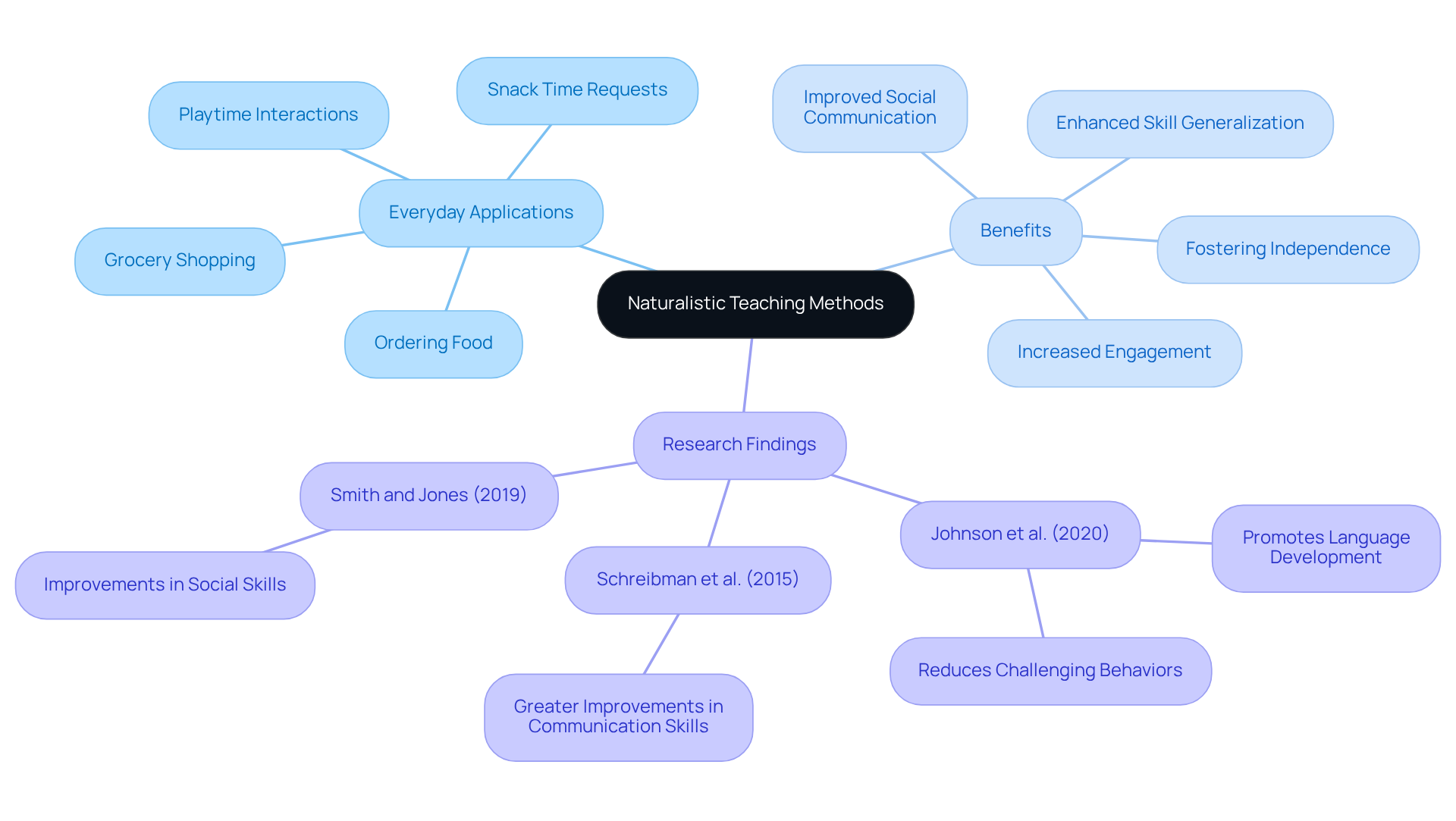
Instructing young individuals on coping strategies for anxiety is crucial for their emotional well-being. Consider the importance of equipping a young person with deep breathing techniques learned in therapy. They should be encouraged to apply these strategies across various scenarios, such as:
By practicing these techniques in diverse environments, the individual can cultivate a comprehensive toolkit of coping strategies, ready to be utilized during stressful moments. This proactive approach not only fosters resilience but also empowers them to navigate challenges effectively.
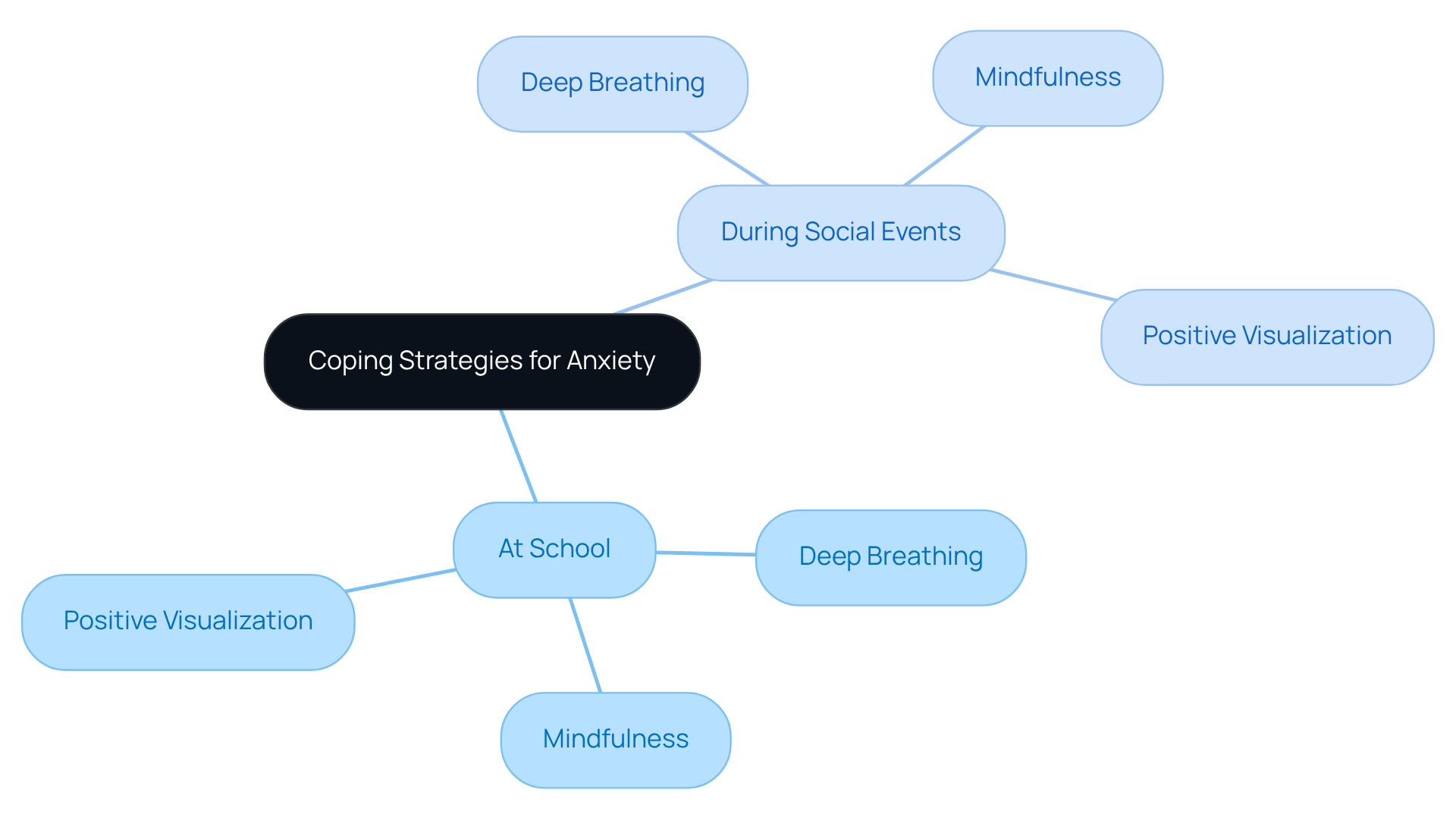
Everyday activities, such as cooking and personal hygiene, must be taught in a way that promotes transferability across diverse settings. For example, when a young person learns to wash their hands in a , it is crucial that they also practice this skill at home and in public restrooms. This approach ensures that the individual can perform these essential tasks independently, irrespective of the environment.
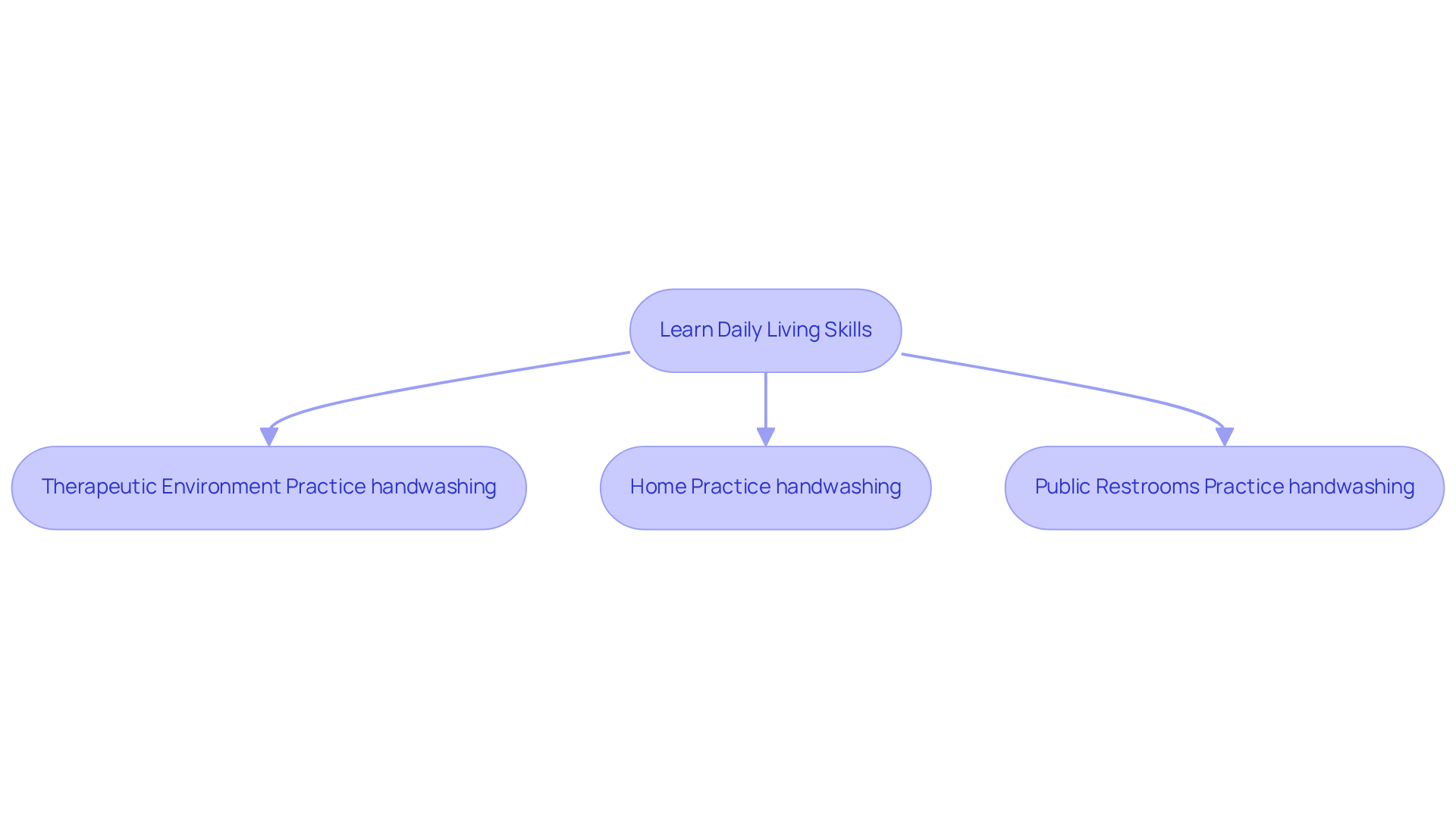
Engaging in sports presents a significant opportunity for young individuals to develop and apply essential teamwork skills. Consider this: a young person who learns to collaborate with peers during a game can effectively utilize these skills in various contexts, such as group assignments at school or family activities. This transfer of teamwork abilities not only enhances their collaborative efforts but also prepares them to navigate diverse social situations with confidence. By fostering these skills early on, we equip our youth for success in both academic and personal realms.
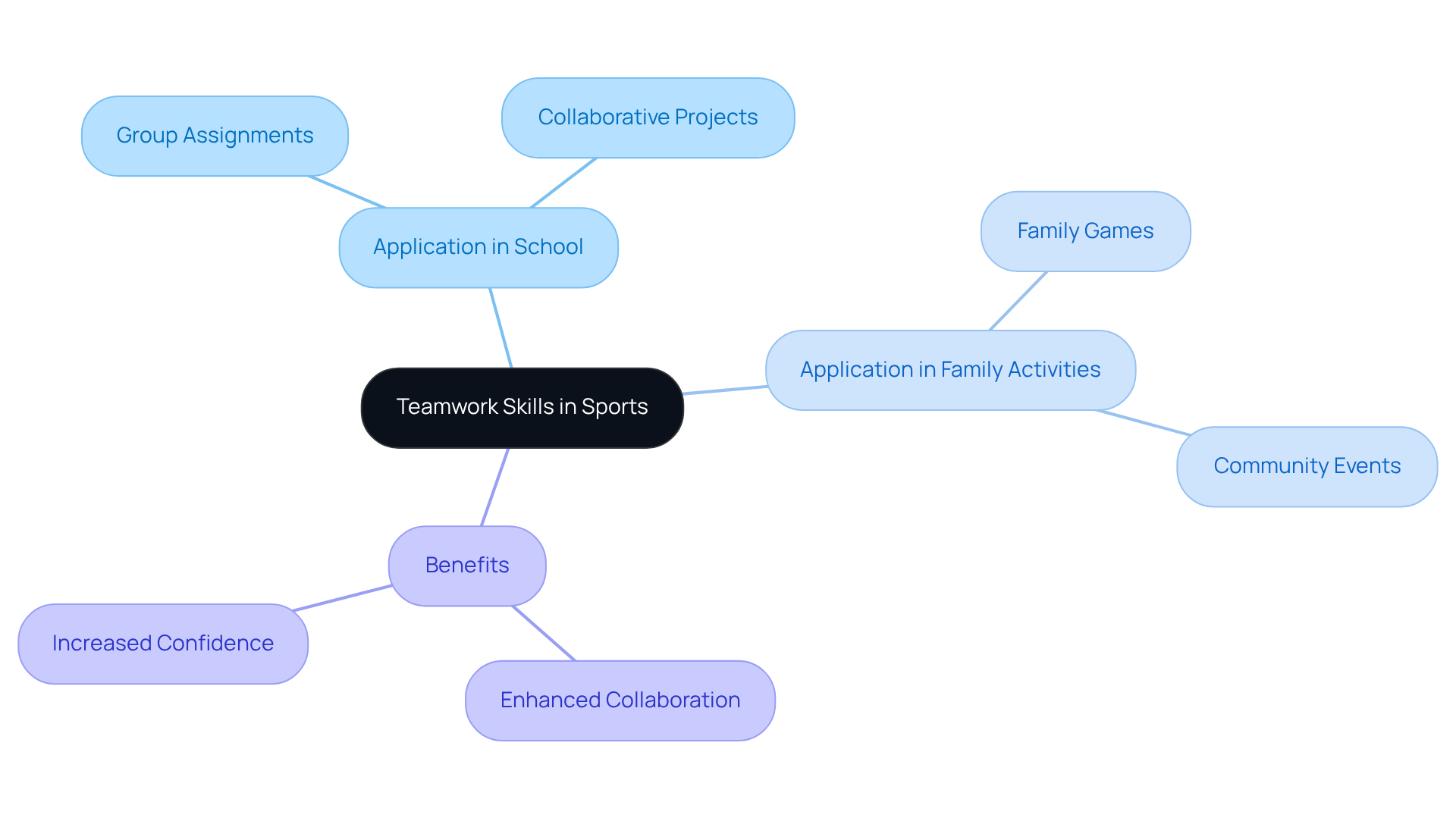
Instructing young individuals to identify products effectively serves to illustrate which of the following is an example of stimulus generalization in marketing. This foundational concept is critical: when a young person learns to , it illustrates which of the following is an example of stimulus generalization as they apply that awareness across various advertisements and store settings. Such ability not only deepens their understanding of marketing strategies but also empowers them to make informed consumer choices.
Current trends in marketing education underscore the necessity of equipping young individuals with consumer knowledge, as experts indicate that early exposure to brand awareness can significantly influence their buying behaviors. By recognizing brands in diverse situations, young individuals cultivate analytical abilities that enable them to navigate the complexities of consumer culture. This essential knowledge fosters responsible consumption habits as they mature.
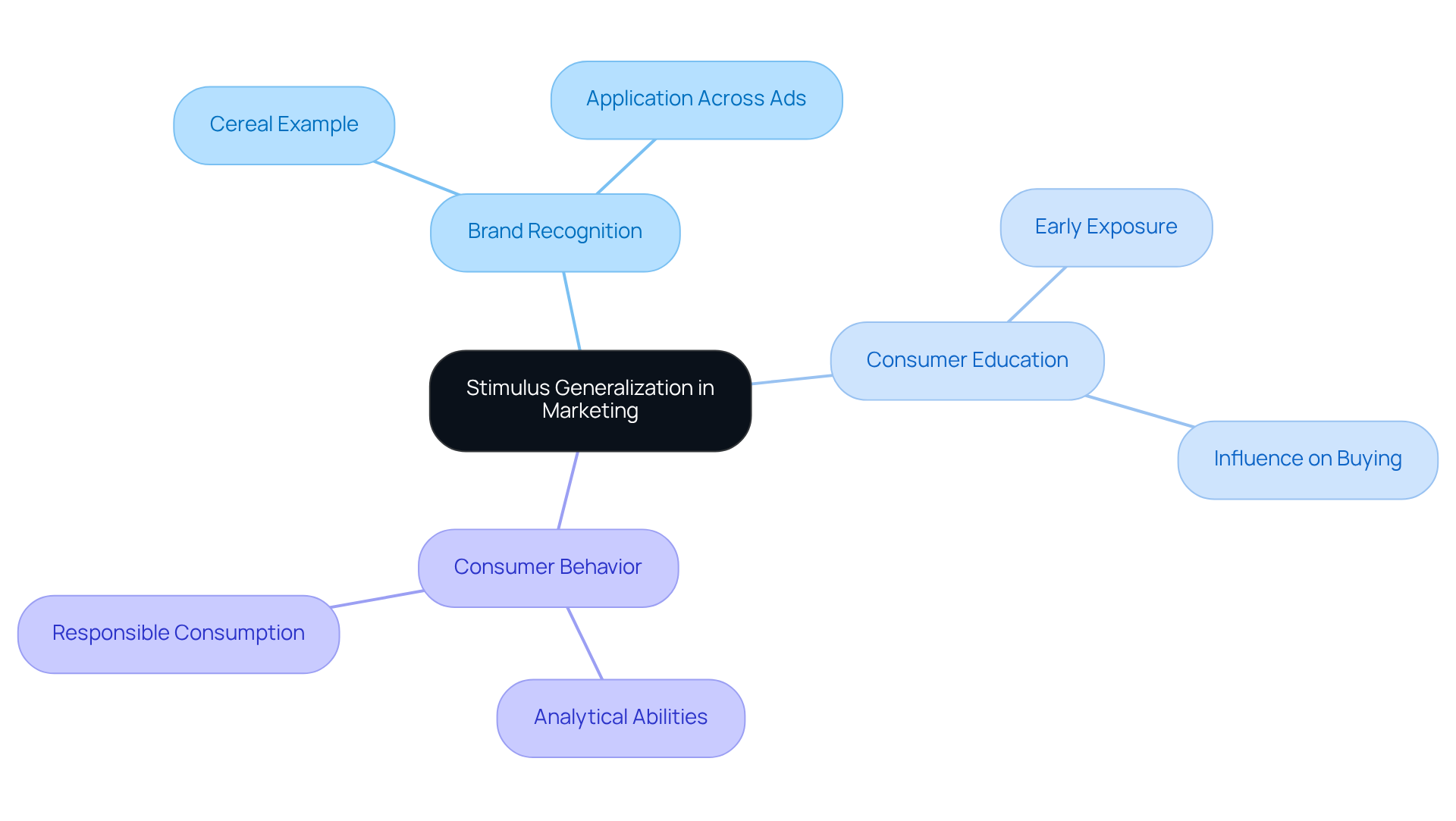
Family participation is essential for the effective application of skills acquired through ABA treatment. Parents play a pivotal role in enhancing communication abilities by encouraging their children to practice these skills during family meals or outings. For example, a child who learns to seek assistance in therapy can apply this skill at home by asking for help with tasks or expressing needs during family interactions.
Research indicates that children whose parents received structured training in ABA techniques demonstrated a 58% increase in skill retention compared to those whose parents were not involved. Furthermore, individuals who achieve strong generalization outcomes are 3.2 times more likely to retain their skills six months post-treatment. This active engagement not only bolsters the individual's ability to consistently but also fosters a supportive environment conducive to long-term success.
As Matthew J. O'Brien, a noted authority in the field, states, 'Parental involvement in therapy, particularly in Applied Behavior Analysis (ABA), is essential for a young person's success.' By integrating learned skills into daily routines and varying practice environments, families can significantly enhance the likelihood that these skills will be retained and applied across different contexts, which of the following is an example of stimulus generalization, ultimately leading to greater independence and confidence for the child.
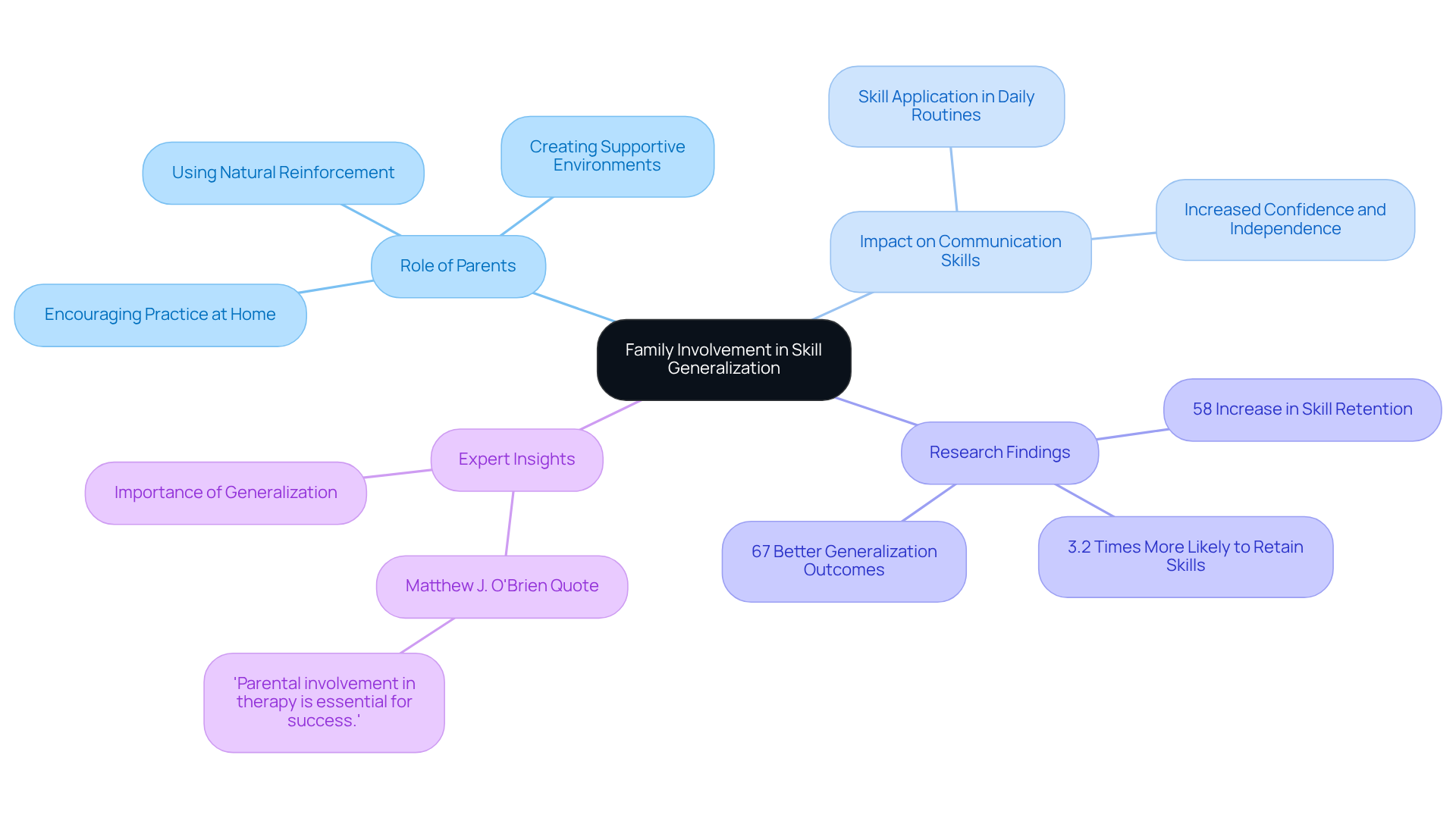
Stimulus generalization in Applied Behavior Analysis (ABA) therapy is a vital concept that emphasizes the importance of transferring learned skills across various contexts and environments. The ability to apply skills acquired in therapy to real-life situations not only enhances an individual's independence but also significantly contributes to their overall development and social-emotional competence.
Throughout the article, numerous examples illustrate how different strategies can facilitate this transfer of skills. From generalizing social skills in community settings to applying classroom learning at home, each instance highlights the critical role of diverse environments in reinforcing learned behaviors. The involvement of multiple instructors, naturalistic approaches, and active family participation further enhances the effectiveness of ABA therapy, ensuring that skills are practiced and retained across various scenarios.
Recognizing the significance of stimulus generalization is essential for anyone involved in ABA therapy, whether as practitioners, educators, or family members. By actively promoting the application of skills in everyday life, stakeholders can empower young individuals to navigate their environments with confidence and competence. Embracing these strategies not only fosters immediate success but also lays the groundwork for long-term growth and resilience in the face of future challenges.
What is Hire ABA?
Hire ABA is a specialized recruitment platform that connects Board Certified Behavior Analysts (BCBAs) with job opportunities in the field of Applied Behavior Analysis (ABA).
Why is Hire ABA important for job seekers and employers?
Hire ABA streamlines the hiring process for both job seekers and employers, making it easier for qualified professionals to find roles that match their expertise and for healthcare employers to efficiently hire qualified BCBAs.
What is the anticipated demand for BCBAs by 2026?
The demand for BCBAs is expected to increase by 25% by 2026.
How does Hire ABA enhance the job search experience for BCBAs?
Hire ABA uses advanced matching algorithms and industry insights to significantly improve the job search experience, facilitating connections that lead to rewarding career placements.
What resources does Hire ABA provide for job seekers?
Hire ABA offers personalized resume assessments, allowing candidates to align their experience and career objectives with suitable job opportunities.
How does technology impact ABA job placements?
Technology plays a significant role in ABA job placements by utilizing visual supports and task boxes, which help BCBAs enhance their effectiveness in the field.
What features does Hire ABA offer to healthcare employers?
Hire ABA provides advanced features such as personalized job matching solutions and comprehensive support to help healthcare employers connect with qualified BCBAs.
What are some examples of applying social skills learned in therapy to community settings?
Young individuals can practice social skills, like greeting others or initiating conversations, in community environments, thereby reinforcing learned behaviors and increasing the likelihood of using these skills in various social situations.
Why is it important for young learners to apply classroom knowledge at home?
Applying knowledge from the classroom to home settings fosters autonomy and strengthens learning, as it empowers young learners to seek help and use skills in different environments.
What is stimulus generalization, and how does it relate to learning?
Stimulus generalization refers to the ability to apply learned skills in different contexts. For example, a young learner who follows multi-step directions in class may begin to use these skills at home, enhancing their overall learning and social-emotional competence.
Our expert recruitment strategies and AI-driven sourcing ensure that you receive top-notch candidates quickly, without compromising on quality. Whether you’re looking for BCBAs, Clinical Directors, or RBTs, we’ve got you covered.